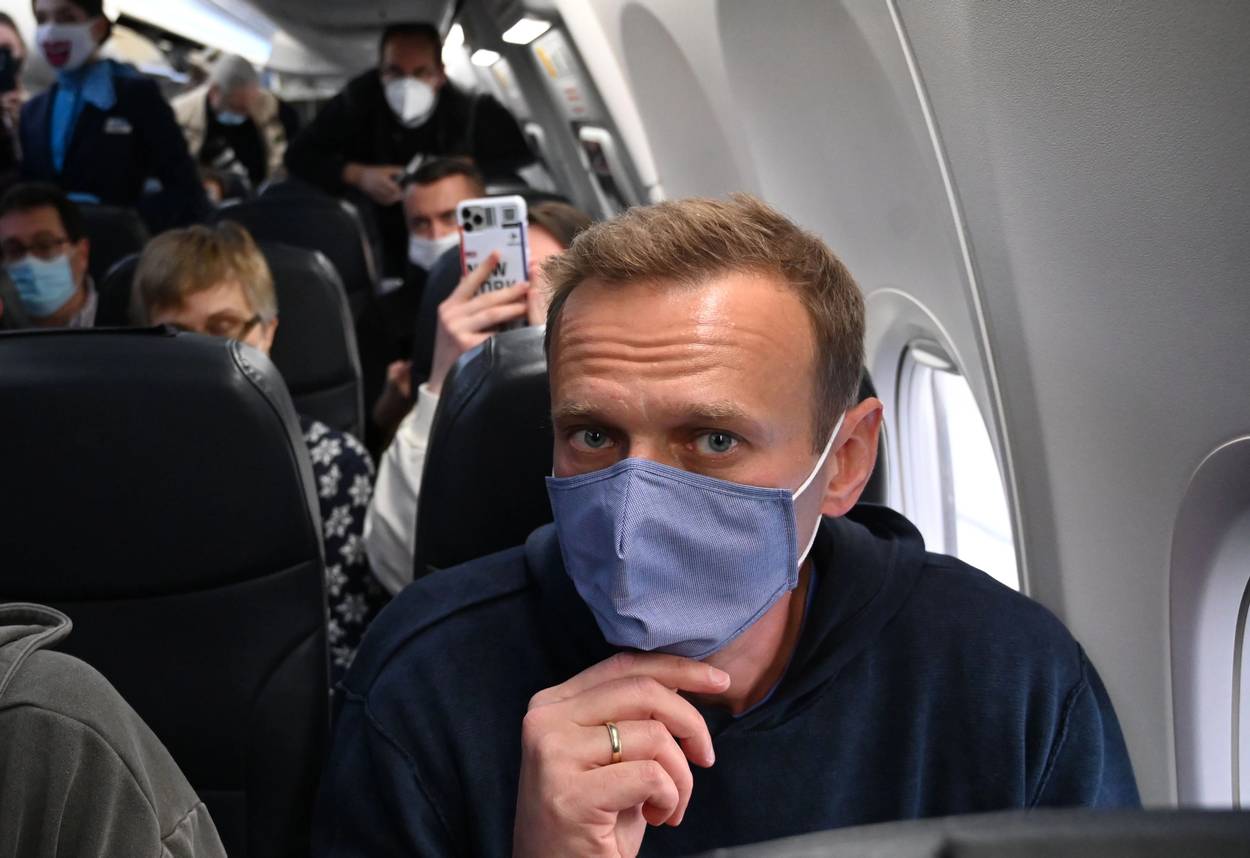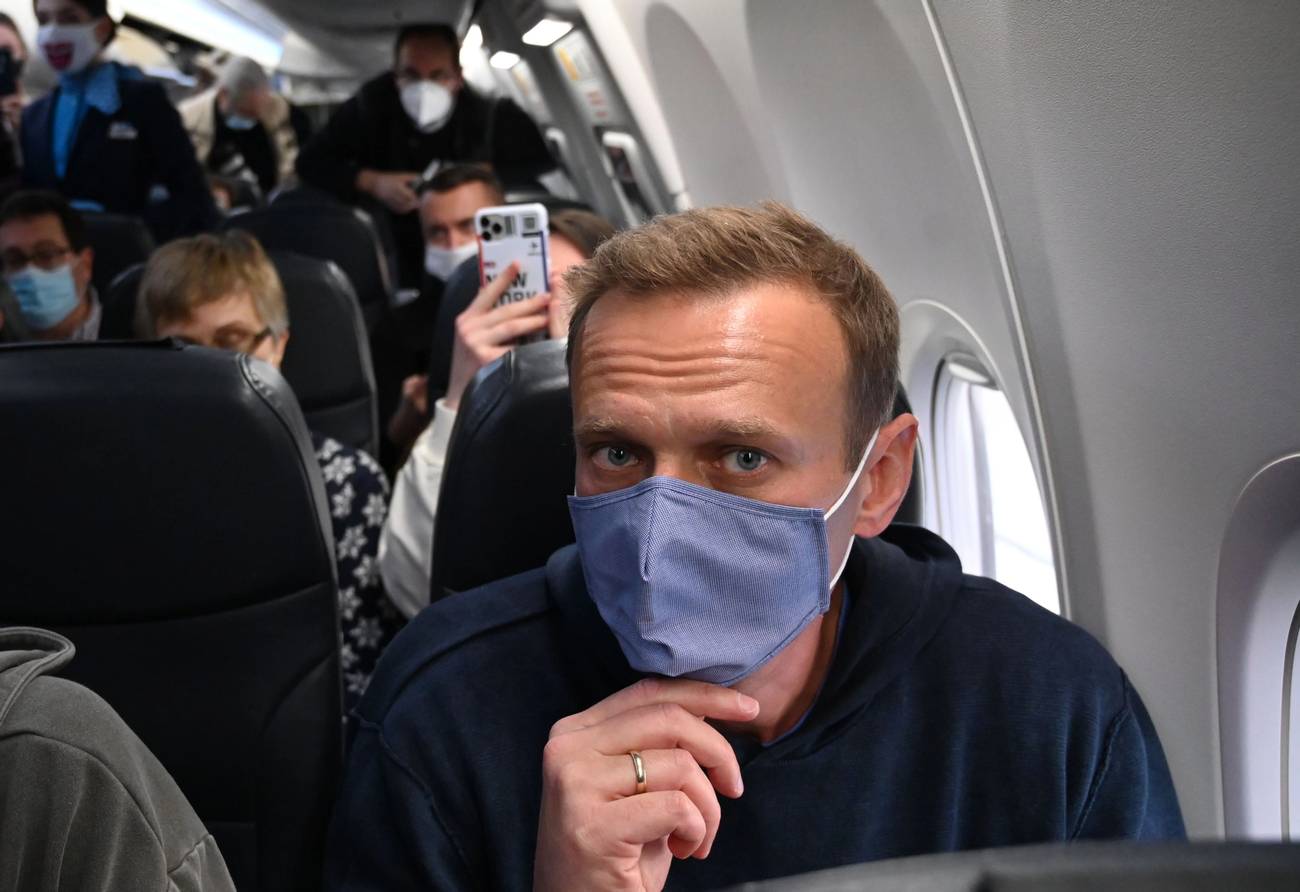Navalny and Putin Are Both in Trouble
The Russian opposition leader is reportedly in physical danger, but his confinement in a modern-day gulag is expanding the size of his movement




Russian opposition leader and anti-corruption activist Alexei Navalny was feeling ruminative about his new life.
On March 15, his official Instagram account published an update based on conversations he had with his lawyers: His head had been shaved bald upon his arrival at IK-2, a veritable gulaglike penal colony in Pokrov, halfway between Moscow and Vladimir. He had been dressed in a black prison uniform and a wool cap. He was enjoying lining up with other prisoners to listen to the national anthem of the Russian Federation at 6 every morning. His verdict on the prison itself was that he “had no idea it was possible to arrange a real concentration camp a hundred kilometers from Moscow.” He compared conditions at IK-2 to something straight out of Orwell. In a more populist and less literary touch, Navalny said the practice of lining up while holding steel shovels in the prison yard every morning reminded him of rows of imperial stormtroopers, scenes straight out of Star Wars.
Officially, Navalny was brought to this frozen hellhole for the crime of not reporting to his parole officer while convalescing in Germany from an attempt on his life. It is quite obvious to everyone that his real sin was publicly throwing down the gauntlet to President Putin.
Which is why the story of his imprisonment did not remain in such a quirky register for very long. Only two days after the Instagram post, Navalny’s lawyers and aides posted the equivalent of an SOS on social media: His health situation was quickly “deteriorating” and he was possibly in mortal danger. The lawyers had been denied access to him ahead of a planned visit, they did not know his whereabouts, and he was now experiencing “severe back pain and numbness in one leg.” A couple of ibuprofen capsules was the extent of the health care the prison camp administration was ready to proffer. One aide to Navalny from his Anti-Corruption Foundation wrote on social media “that Navalny’s life is in danger and [we] demand immediate access to him.” On March 29, Navalny said prison authorities are attempting to place him in solitary confinement.
Navalny’s coterie had been thoroughly prepared for his triumphant return from Germany on Jan. 17, when he was promptly arrested at the passport check desk. His investigative team had spent months crafting a convincing two-hour video of a forensic investigation into Putin’s vast wealth, unspooling the convoluted ownership structure of a tasteless behemoth palace built for him by cronies, who pay such informal taxes for the privilege of remaining in the political elite. Navalny’s own narration of the film concluded with a clarion call for mass mobilization of demonstrators all across Russia in the middle of January.
The audacious act of returning to Moscow and placing himself at the mercy of Putin was straight out of a medieval epic, or a Solzhenitsyn book.
He had viscerally understood that outside the exceptional case of Vladimir Lenin, exiled politicians and leaders throughout Russian history typically do not get a second chance, usually dissipating into irrelevance instead. The absurd show trials in which he was forced to participate upon his theatrical return from Germany—where specialists saved his life from the aftereffects of a military-grade poison placed in his underwear by FSB agents—were over. He had delivered one of the charismatic and defiant speeches for which he was known during the hearings. He was summarily pronounced guilty, and sentenced to several years imprisonment in one of the most dehumanizing and punitive penal colonies to be found in a country that harbors one of the most brutal prison systems in the world.
The audaciously brave act of giving himself up by returning to Moscow and placing himself at the mercy of Putin—thus literally courting martyrdom for his cause—was straight out of a medieval epic poem, or a Solzhenitsyn book. “I’m the main opposition leader not because I banned everyone else from being one, but because it’s scary to be one,” he once told the Financial Times. The act of delivering himself as a hostage to the Kremlin after it had attempted to poison him transformed Navalny into an international sensation and the undeniable leader of resistance to Putinism. It also earned him tremendous moral respect from the Russian population, which had until then considered him mostly as an anti-corruption blogger with marginal popularity outside of educated urbanites and the young. But this was the act of a real muzhik, the sort we Russians respect. It also represented exactly the sort of direct frontal challenge to the government that Putin’s system could not countenance.
The demand for Navalny’s freedom is now the core slogan of the political opposition, but his imprisonment has shifted the locus of responsibility to the wider network of his comrades and colleagues. Paradoxically, Navalny’s confinement in a modern-day gulag—where he is unable to openly contest the regime—has possibly transformed him into a unifying figure for a broader and more coherent opposition movement, capable of accommodating a wider array of people with differing political views. Polling from the Levada Center, the most trusted sociological institute in the country, shows that around one-fifth of the Russian population actively supports the street demonstrations.
After two decades in power, Putinism as a political creed seems a bit stale, if not yet exhausted. It may have some political steam left, but it seems to many to have run out of imagination and excitement. The social compact of rising living standards in exchange for mass political quietude now seems to be rather brittle. Many different sorts of people from all across the country and from various demographics have accumulated serious grievances and frustrations. Suffering the consequences of endemic corruption is a binding experience across class and geography; the January protests—ostensibly in defense of Navalny himself—really offered the opportunity for people to focus their frustrations. That the movement’s leader is no longer in the political arena on a daily basis, taking concrete positions on various issues, is in some ways a boon. Focusing activism narrowly on anti-corruption, rather than on a more conventional liberty agenda, was always Navalny’s singular innovation.
The protest movement needed to demonstrate its public support with a concerted show of strength. The demonstrations took place in at least a hundred Russian cities and towns two Sundays in a row in late January. They constituted the largest mass protests in Russia in almost a decade, and indeed proved that the opposition could bring people into the streets on short notice. Predictably, the Kremlin responded with a calibrated display of force. Nearly 12,000 protesters across the country were reportedly detained or arrested. The arrests and indiscriminate beatings were recorded and beamed live across the country via social media. Individual uses of force were entirely random. For the Kremlin authorities, the point was to deter a gathering protest movement by deploying just enough targeted violence and fear tactics to make the average person think thrice about taking part, but without using so much violence that it would radicalize the population.
The Kremlin then commenced in earnest to selectively prosecute and hassle senior Navalny allies, as well as members of his anti-corruption organization, with some being placed under house arrest or given farcical charges (such as contravening COVID restrictions). Several participants from the January protests are only now receiving two-week administrative sentences for their involvement. Lawyer and Navalny ally Anastasia Vasilyeva was recently captured on video, calmly and cinematically continuing to play the piano as police entered her home to issue her summons. Navalny’s longtime spokeswoman, Kira Yarmysh, had her novel censored by a book fair which had bowed to pressure.
For its part, Navalny’s team has closely observed the cautionary example in next door Belarus, where patient and disciplined protesters spent seven months fruitlessly marching against their own strong man, President Alexander Lukashenko. The intrepid Belarusian protesters were beaten and arrested every Sunday, month after month, to no avail. For many reasons, including geography and weather (it is very cold in Minsk, but nothing compared with winter in Siberia), this was not a strategy that could be replicated in Russia. After just two weekend protests, the Russian opposition ceased asking people to assemble against the riot police and troops from the Ministry of Internal Affairs. There could only be diminishing returns for doing so, and they decided to wait for warmer weather to make their next move. Russian authorities and the opposition are now circling one another; new forms of resistance will need to be developed.
In the meantime, Navalny’s campaign chief and close confidant, Leonid Volkov, recently revealed that the next set of protests will take place as soon as half a million people sign up online. Around a quarter million have done so already. Spring is coming.
Vladislav Davidzon is Tablet’s European culture correspondent and a Ukrainian-American writer, translator, and critic. He is the Chief Editor of The Odessa Review and a Non-Resident Fellow at the Atlantic Council. He was born in Tashkent, Uzbekistan, and lives in Paris.